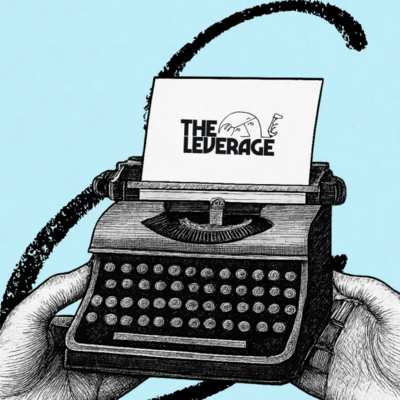
Was this newsletter forwarded to you? Sign up to get it in your inbox.
“I am so excited about this company, but the cofounder is quitting. My other friend who works there is leaving. What should I do? I love the product and think they are onto something special.”
I was strolling around the Salt Lake City Walmart parking lot with Varun Anand, the lanky, 6-foot-4-inch soon-to-be cofounder of software company Clay, and sweating profusely. Anand had us doing laps, wildly gesticulating as he explained his conundrum. He was looking for his next gig, and he couldn’t stop thinking about a little startup in New York.
It was 2021, the height of Covid-era career moves, and Anand was on the hunt. Because of his background having led go-to-market at large startups, he had more established offers on the table. But he had fallen in love with a soon-to-be-released product. I had started writing at Every six months before and was living in Salt Lake City, and through a friend of a friend, he had reached out to me to talk shop on what startups I found interesting.
Everyone who plays the high-risk game of early-stage startups can relate to this feeling. Analysts (including this one) will tell you that the odds of startup failure are over 95 percent. The gray hairs will accumulate, the cushy life you could have working at Google will haunt you, and discomfort will be your constant state.
Nevertheless, some part of you yearns for the adventure. You have an irrational instinct that this idea could work—somehow, some way. Anand had it that day. I had it the day I sent my first newsletter to 25 subscribers, consisting exclusively of my roommates and extended family. You, too, have probably heard the siren song of building something new.
That emotion is important. It is that heady mix of passion, American individualism, and capitalist spirit that has propelled Silicon Valley forward for the past 50 years.
In the case of Anand, it led to him joining Clay. Since then, the software startup that helps companies launch their products in the market raised a $62 million Series B at a $500 million valuation from Meritech Capital, with participation from Sequoia. It has grown like a weed since its launch on Product Hunt in February 2022, and now has 100,000 users at more than 2,500 companies. Last year, while most software founders I know were fighting tooth and nail for growth the Clay team had so much they could barely keep up.
None of that success was obvious in 2021, when the company hadn’t publicly launched yet. Anand’s only guiding light was his intuition that the several-year-old company had potential. At the time, Anand asked me what he should do. A few months after we had met in person we debated the variables of Clay’s potential success over text messaging, trying to pin it down to technical factors—the focus of its product-led growth, how it would capitalize on the buzz. I realized that there was something much grander to rely on than these details—his intuition. I sent Anand a text: “I mean if you are still excited about a B2B SaaS thing after this long then do it.”
Five years into its operation, in early 2022, Anand joined Clay, leading all things go-to-market. By doing so, he joined cofounder Kareem Amin, who had been investing in Clay’s mission since it incorporated in 2017. (The other cofounder, whom Anand referenced in our meeting, left to pursue ideas in crypto.) Two intuitions came together to guide what is now a category-defining platform to help sales and marketing teams amass data on prospective customers and customize their outreach.
The founding feeling
“We wanted to give other people access to the magic of computers.”
In the mid-2010s, multiple founders had the same idea. Surely there was a way to give people who couldn’t program a taste of the power that a software engineer felt when they built something from scratch. This idea powered the creation of incredible companies: Notion taught people the productivity potential of personal databases. Bubble was a no-code app builder. Retool made it easy for companies to build internal apps easily. All of these startups are worth billions, and all of these startups started with the same insight as Amin and his cofounder Nicolae Rusan.
Amin and Rusan sold a company they had cofounded in 2012, so they were familiar with what it took to build something. After their time at the acquirer ended in 2015, they spent a couple of years exploring ideas, trying to figure out the right form factor for their idea on giving more people the power of programming. “We walked all around, so we could see the map of the startup game we were trying to play,” says Amin. “I felt comfortable going all in because we had put in the time and the effort.”
Finally, in 2018, after building and rejecting various options, they settled on a form factor—the spreadsheet. It was the one programming-esque environment with which everyone in the world was familiar. They could make a spreadsheet that connected with APIs and new types of data. Great! They just invented Airtable, a startup founded in 2012 that raised funding at a $11.7 billion valuation in 2021.
Beyond competition, there was another problem: They had no consistent users. Paradoxically, the product was too powerful. Because an API-integrated spreadsheet is such a flexible idea, it was being used for anything from automating data workflows to handling recruiting pipelines. Amin and Rusan struggled to build a brand identity and repeatable sales motion. Of all the things you could do with Clay, sales and marketing were the most popular.
However, as they themselves started to pitch the product to prospective customers, Amin had a flash of insight: “Once we started doing sales and marketing of Clay did we actually realize the pain we should solve.” They spent 2020 and 2021 removing features and streamlining the product toward a single use case. If they could help customers add data to the leads they were storing in their customer relationship manager (CRM), they could solve a problem that no one else was.
It may be easy to connect the dots and think Clay’s path was somewhat linear. Try, make a few mistakes, try again, then win. But if you stop for a moment and meditate on how much time has passed, you’ll realize that it was a seven-year journey from the moment they first had their idea. That is seven years of doubt and suffering and experimentation. Seven years with unclear market signals and the only push being intuition. At one point, Amin was so stressed that he went on a 10-day silent meditation retreat.
Eventually, he found that it wasn’t merely market signals and rational decisions that helped Clay grow. “Most of my best decisions were all guided by a clarity of feeling and coincidences where it felt right,” he says.
The Only Subscription
You Need to
Stay at the
Edge of AI
The essential toolkit for those shaping the future
"This might be the best value you
can get from an AI subscription."
- Jay S.
Join 100,000+ leaders, builders, and innovators

Email address
Already have an account? Sign in
What is included in a subscription?
Daily insights from AI pioneers + early access to powerful AI tools









Comments
Don't have an account? Sign up!
Evan what a great piece of writing - you capture the in-the-moment pace and action of startup life, the excitement, passion and deep dark depths. It has the pace of a Ben Mesrick book, while somehow touching on the metaphysical and philosophical aspects of what truly motivates us. As a snapshot of the good, the bad and the divine in American entrepreneurialism it is outstanding.
Compelling, as always. One (apparent) contradiction piqued my curiosity: you say that "All of this activity was driven by instinct, not data," and then a couple paragraphs later that "when Anand first joined, he spent months in back-to-back customer calls." All those customer calls, in my mind, constitute an incredibly rich set of data -- qualitative, rather than the quantitative data we usually obsess over in tech circles, but data nonetheless.
My interpretation is that their early activity was driven by instinct, which itself was necessarily informed by qualitative data generated through customer research and not by quantitative data that could be represented in charts and graphs. But that interpretation may be skewed by my own beliefs! Am I tracking with the spirit of the piece, or do you believe that the instincts that drove their early activities were genuinely independent of the qualitative research?
@bethadele Good question! They committed to the GTM use case and felt that it was right before Varun started to do all those calls. That belief is the thing that justified him suffering through all those calls haha. But you are totally right, those calls constituted data that they used to refine the product.
Great piece thanks!
Great piece. Since starting my own journey in entrepreneurship this year, I've become a believer in the "divine self" and trusting you in your intuition. We are put on this earth to create something uniquely ours and it's important to discover that rather than trying to mimic others' definition of success.